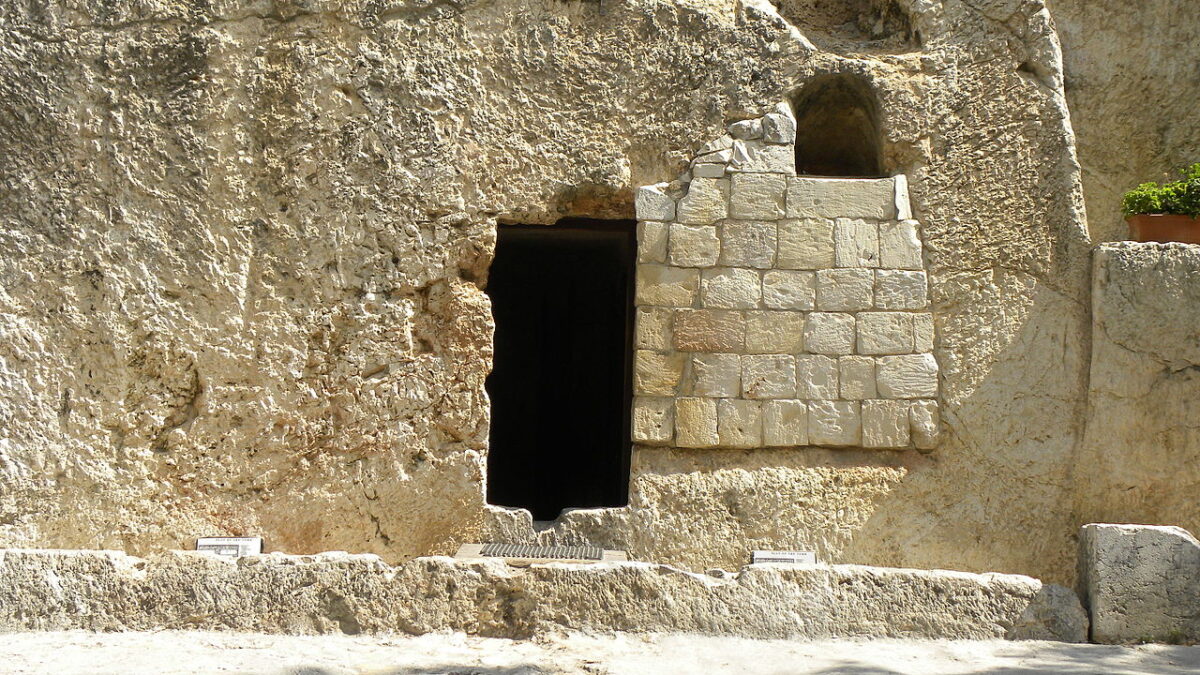Tonight begins Passover, or Pasach, celebrated worldwide by Jews. As recounted in Exodus 13:3-10, this ritual meal marks their ancestors’ escape from Egyptian captivity.
About three weeks earlier, Christians celebrated Easter to commemorate Jesus’ Resurrection. Judaism and Christianity share not merely monotheism, but also recount their miraculous foundations as history.
Together they form the moral foundation for Western culture, a foundation that is collapsing, in part due to post-Enlightenment critiques of the historicity of these religions. But, as a careful examination of the historical record will show, these critiques can’t quite justify a wholesale rejection of Judeo-Christian values.
Many scholars dismiss the Exodus as a fable. Anthropologists contend that an enormous migrant population together with livestock could not have survived that journey in a desolate landscape, and the archaeological record is incomplete.
But the story does not end there. Textual critics study the Hebrew scriptures in the original languages to help contextualize our understanding and untangle questions. When did the Israelites escape from Egypt? How and where did they cross the “Red Sea”? Where was Mount Sinai? What route did they take? These questions are difficult, but intriguing answers exist.
Period
According to 1 Kings 6:1, Solomon began temple construction in his fourth year of reign (c. 966 B.C.), 480 years after the Israelites’ escape. That dates the Exodus to the mid-15th century B.C., presumably during the ambitious 18th-dynasty reign of Thutmose III as pharaoh.
This is too early, however, because of regional Egyptian dominance over the then-vacant Levant. Exodus 1:11 identifies Pi-Rameses (modern Qantir) as one complex built under Israelite conscription and used for about two centuries, meaning the Exodus was no earlier than the 19th-dynasty reign of Rameses II (c. 1279-c. 1213 B.C.).
Further, the Merneptah Stele of Rameses’ successor, dating from 1208 B.C., mentions Egyptian engagement with Israelite tribes toward the end of the Bronze Age and before the Sea People’s invasion in c. 1178 B.C. that precipitated the Philistine settlement along the Levantine coast as reported in Judges 13:1.
Not So Fast
Other evidence points to a later period, especially considering Egyptian hegemony over the Levant through most of the 19th dynasty, as exemplified by Egypt’s victory over the Hittites in the Battle of Kadesh in 1274 B.C. Additionally, linguistic analysis dates Miriam’s Song of the Sea (Exodus 15:1-18, 21) to the 12th century B.C. and the Song of Deborah (Judges 5:1-31) to the late 12th to 11th centuries B.C.
The former celebrates escape from the Egyptian army (partly recounted in Psalm 78:12-14), while the latter commemorates Israel’s military defeat of Canaanite forces at the Battle of Kishon in the Jezreel Valley. The Judges account (5:19-20) provides clues: “at Ta’anach by … Megiddo. … From the heavens the stars fought.”
The destruction of the strategic and fortified city of Megiddo in the Jezreel Valley about the mid-12th century B.C. left the smaller settlement Ta’anach to demarcate the battlefield. Ta’anach’s abandonment in 1125 B.C. provides another clue to the date of the Exodus. The stellar reference might indicate a solar eclipse on September 30 in 1131 B.C., although first-century historian Josephus in Antiquities interprets this celestial allegory instead as heavy rainfall.
The Egyptians recognized Israelite occupation at the end of the 13th century B.C., before the invasion by Sea Peoples (including the Philistines). So the Exodus could have occurred in the mid-to-late-12th century during the early 20th dynasty (1190-1077 B.C.) while Egypt underwent imperial decline, and subsequent to Philistine arrival (Exodus 15:14). The brief reigns of these pharaohs brought frequent administrative changes (Exodus 4:19) that Moses could use to exploit an untested ruler.
Crossing
Colin Humphreys provides extensive historical analysis and geographic description in his seminal The Miracles of Exodus. He explains the journey by identifying select place names based on topography and the Exodus chronology, beginning at Pi-Rameses (Exodus 12:37, Numbers 33:3) and camping at Succoth (Exodus 13:20) at modern-day Maskhuta. The sojourn began in springtime after the desert rains, and at full moon, so the people and animals could travel both night and day.
Another question revolves around the water crossing at “yam sup,” typically translated as “sea of reeds.” Yet 1 Kings 9:26 locates the port of Ezion-Geber on the Gulf of Aqaba as at yam sup, identified in English-language Bibles as the Red Sea (so named for the coral visible at very low tide).
Humphreys proposes that the Hebrews crossed the Paran Desert traveling east past Nakhel and then traversed south through a narrow river bed pass, perhaps Wadi Shlomo, to reach the Aqaba gulf shore. To their alarm, Egyptian soldiers marched behind, while the chariots overtook them through the Arabah Valley. Moses and his people were now trapped by a pincer maneuver (Exodus 14:9-10).
In a miraculous turn of events, an unusually strong and steady wind prevailing from the northeast in that region produced a “wind setdown” during the night. These gale forces pushed the water to provide a temporary dry path. This phenomenon has been documented for the Nile Delta and Lake Erie. After the tribe crossed near Ezion-Geber, Egyptian forces gave pursuit just as the wind withdrew.
Mount Sinai
Following their harrowing escape, the Hebrews camped at Elim (Exodus 15:27, Numbers 33:9) in the vicinity of Jabal Bakr, resuming 30 days (Exodus 16:1) after their journey had begun. They camped along the Red Sea (Numbers 33:10), probably at Tiryam, before moving to Rephidim (Exodus 17:1, Numbers 33:13), which remains unidentified. There, Amalek natives attacked them before they arrived 15 days later at Mount Sinai (Exodus 19:1-2) in the land of Midian, where their leader had sojourned years before.
Based on geography, Humphreys locates Mount Sinai at the basalt mound Hala-’l Badr, rejecting other candidates, notably Jabal al-Lawz in Arabia and the traditional Jabal Musa in the Sinai as non-volcanic. An isolated plateau, Badr presents an imposing site in the present day.

Glen Fritz / Google Earth with author’s modifications
In addition, Humphrey proposes a travel route that attempts to square the biblical account with today’s geography of the region. Along the wanderings, Kadesh Barnea (Numbers 33:36) provided refuge. Its presumed site lies in the northern Sinai Peninsula, despite the absence of occupation prior to the monarchy.
Petra has been proposed as the alternate destination after leaving Mount Sinai. Other early locations, such as Jabal Nibu (Mount Nebo), where Moses died (Deuteronomy 34:1-6), the cultic site of Shiloh (Joshua 18:1, Judges 21:19), and Be’er Sheva (Joshua 19:2) in the Negev had importance.
The scribes for these sacred texts that contain the Exodus account assumed the serious responsibility of annotating their literary inheritance. Devotional motivations did not negate the historical details of their origin narratives, even if modern academicians complain about complications in verifying those descriptions.
Our post-Enlightenment society often rejects inconvenient moral imperatives because they supposedly originate from ancient folklore. With the passage of time, many elements of the Exodus story seem unresolved. But the core inspiration remains — a beleaguered people in bondage pleaded with God to set them free (Deuteronomy 26:7-8). And so they were.









